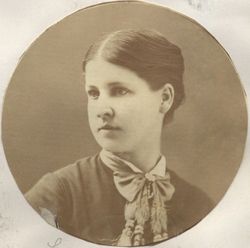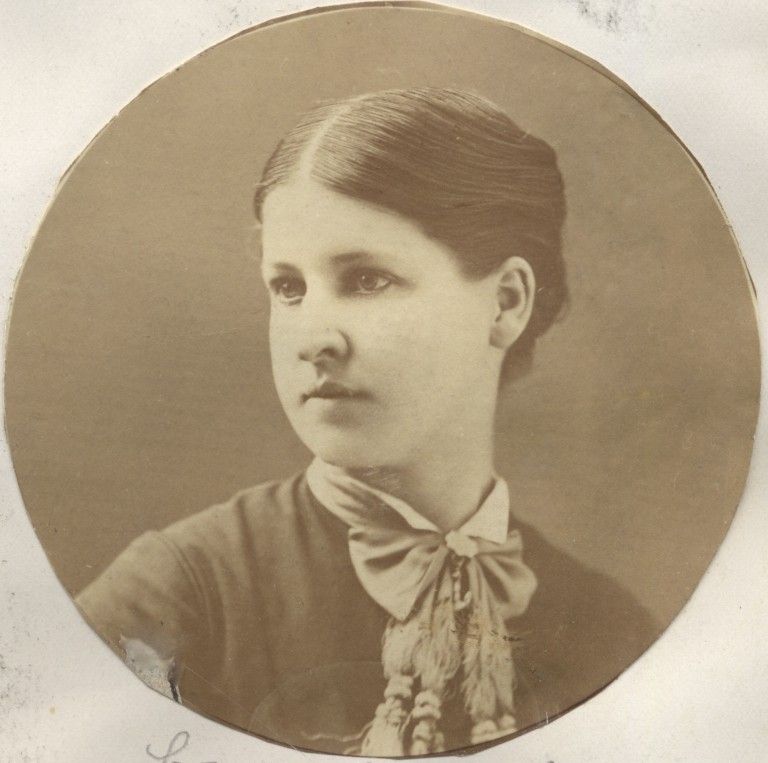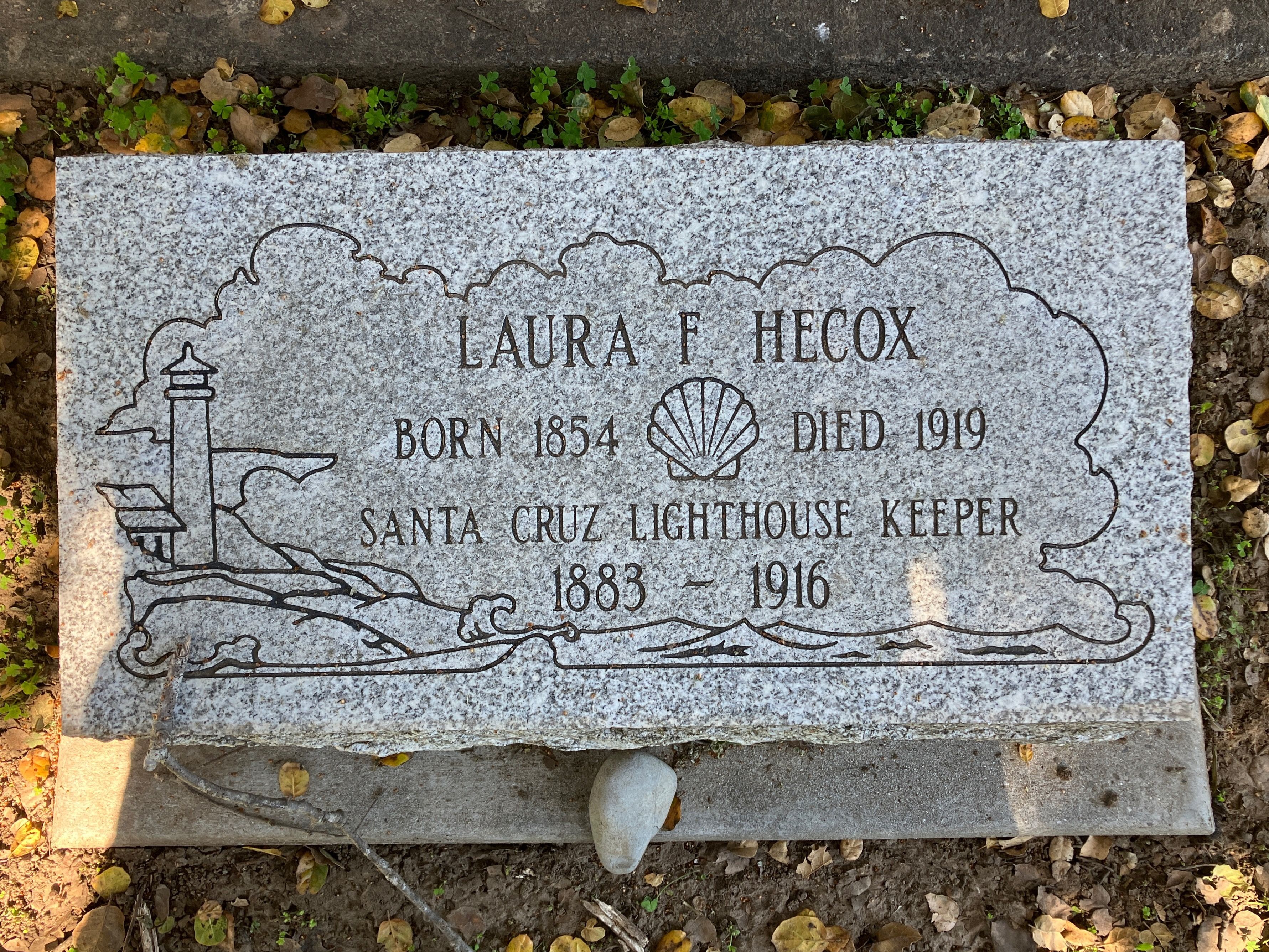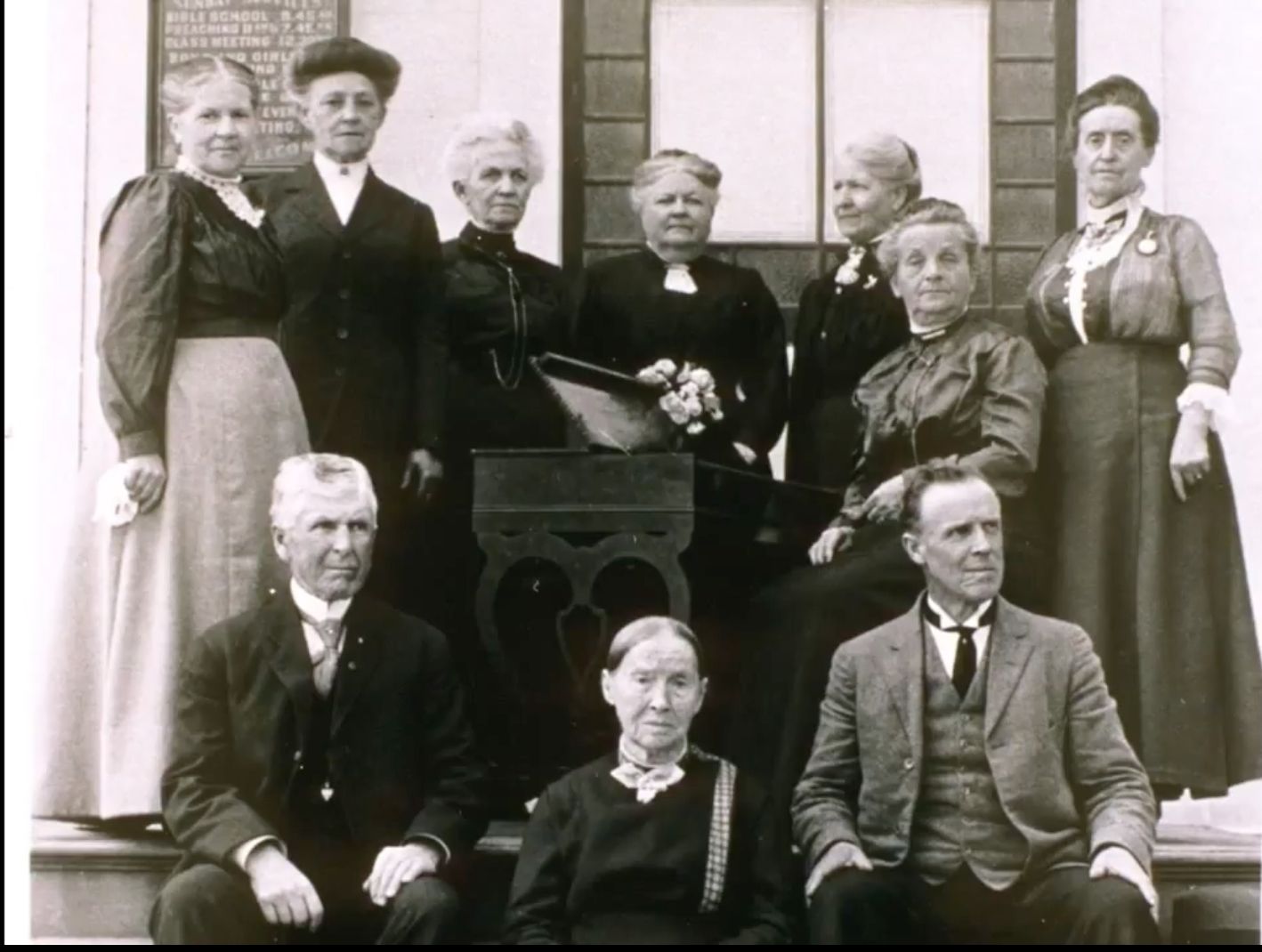Young Laura soon began collecting seashells, minerals, fossils, Indian artifacts, and other specimens and curios, turning part of the lighthouse into a private nature museum. "This young lady is quite a student of conchology, and her display of shells and cabinet specimens is greatly admired by all who visit the lighthouse," said a writer in 1879.
In 1883 Adna Hecox died and Laura Hecox was appointed lighthouse keeper by the federal government. She stayed at the post for thirty-three years. On weekends she gave public tours of the lighthouse including her personal natural history museum. Although interested in all of natural history, her specialty was mollusks. She corresponded with prominent scientists of the day and had at least two mollusk species named in her honor.
In 1904 Laura Hecox deeded her collection to the City of Santa Cruz for the establishment of its first public museum. The following year, the Hecox Museum opened in the basement of the new Carnegie Library, which was located on the site of the present Central Library. Dr. Charles Lewis Anderson, local physician and naturalist, served on the library Board of Trustees and played a key role in establishing both the library and museum. Carnegie-Library
The museum opened August 21, 1905. There were displays of dried sea stars and crustaceans, Indian baskets and mortars, Eskimo artifacts, minerals, agates, gems, petrified woods, coral, bird nests and eggs, turtle and tortoise carapaces, and several cases of shells, including two hundred local species. In a short speech, Laura Hecox said that she did not feel that she was losing anything in giving the collection but rather was merely taking everyone else into partnership with her in the enjoyment of it. The Hecox collection remained at the library until about 1917 when it was moved to the new Santa Cruz High School.
Young Laura soon began collecting seashells, minerals, fossils, Indian artifacts, and other specimens and curios, turning part of the lighthouse into a private nature museum. "This young lady is quite a student of conchology, and her display of shells and cabinet specimens is greatly admired by all who visit the lighthouse," said a writer in 1879.
In 1883 Adna Hecox died and Laura Hecox was appointed lighthouse keeper by the federal government. She stayed at the post for thirty-three years. On weekends she gave public tours of the lighthouse including her personal natural history museum. Although interested in all of natural history, her specialty was mollusks. She corresponded with prominent scientists of the day and had at least two mollusk species named in her honor.
In 1904 Laura Hecox deeded her collection to the City of Santa Cruz for the establishment of its first public museum. The following year, the Hecox Museum opened in the basement of the new Carnegie Library, which was located on the site of the present Central Library. Dr. Charles Lewis Anderson, local physician and naturalist, served on the library Board of Trustees and played a key role in establishing both the library and museum. Carnegie-Library
The museum opened August 21, 1905. There were displays of dried sea stars and crustaceans, Indian baskets and mortars, Eskimo artifacts, minerals, agates, gems, petrified woods, coral, bird nests and eggs, turtle and tortoise carapaces, and several cases of shells, including two hundred local species. In a short speech, Laura Hecox said that she did not feel that she was losing anything in giving the collection but rather was merely taking everyone else into partnership with her in the enjoyment of it. The Hecox collection remained at the library until about 1917 when it was moved to the new Santa Cruz High School.
Family Members
Sponsored by Ancestry
Advertisement
Explore more
Sponsored by Ancestry
Advertisement












